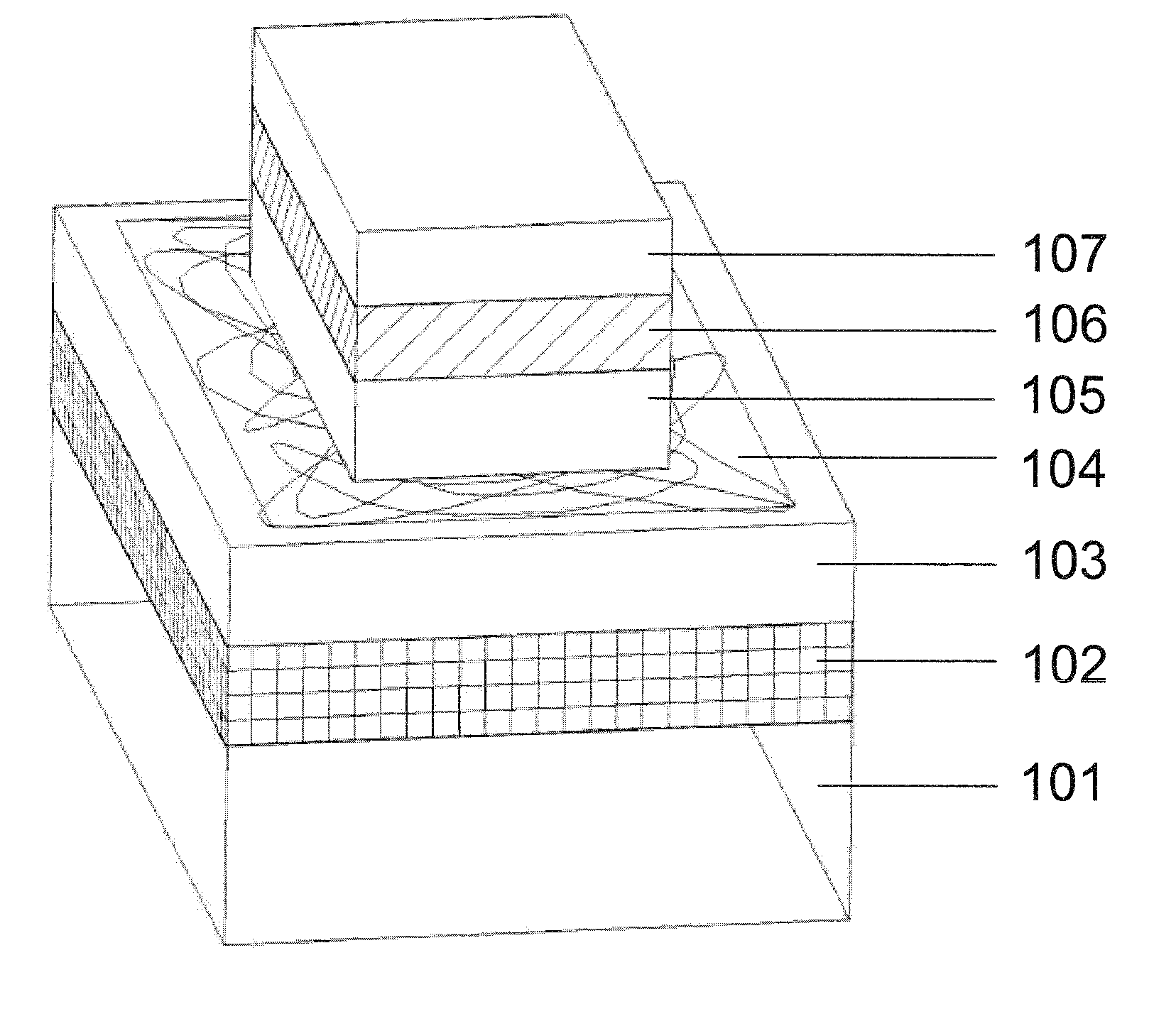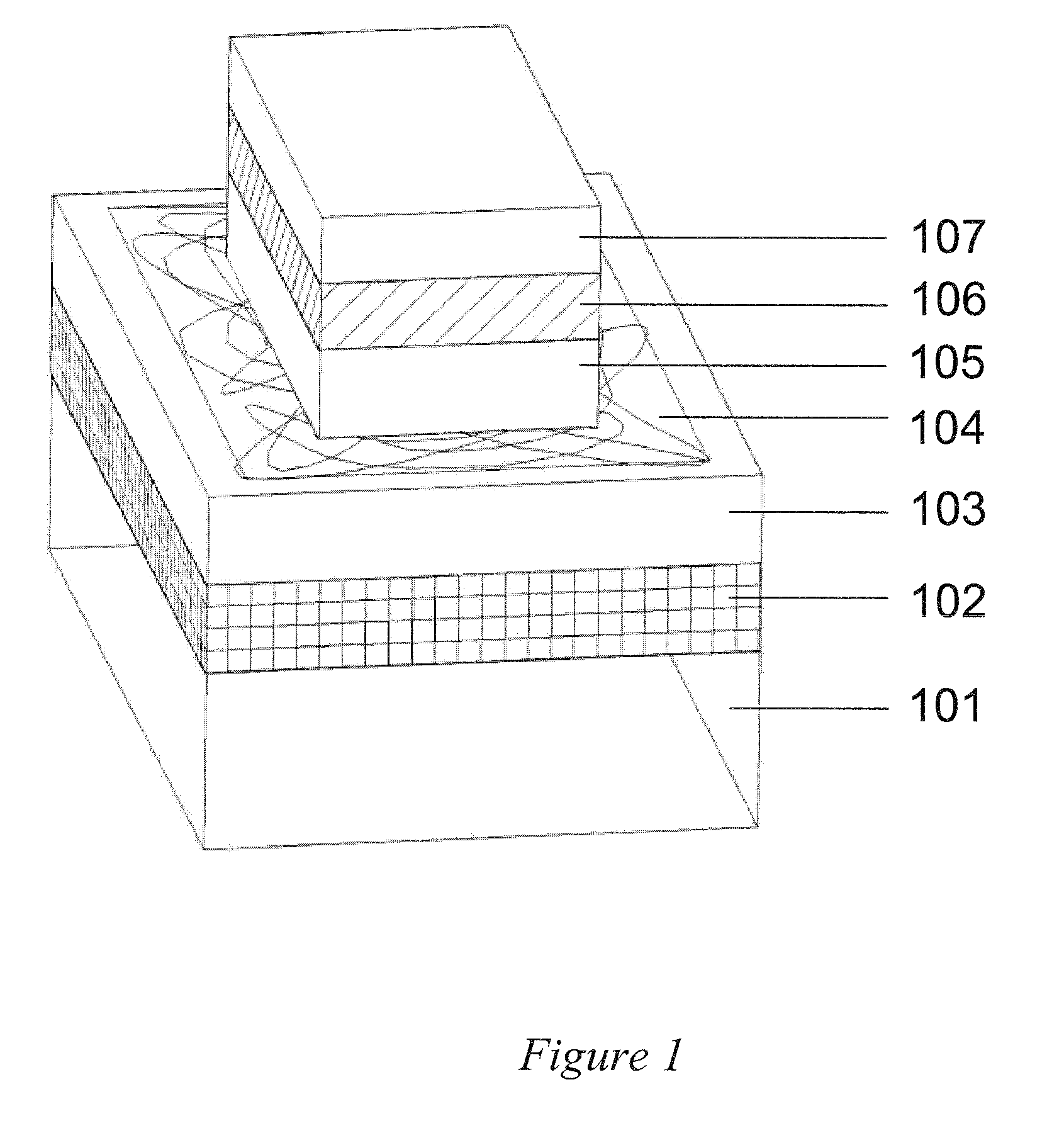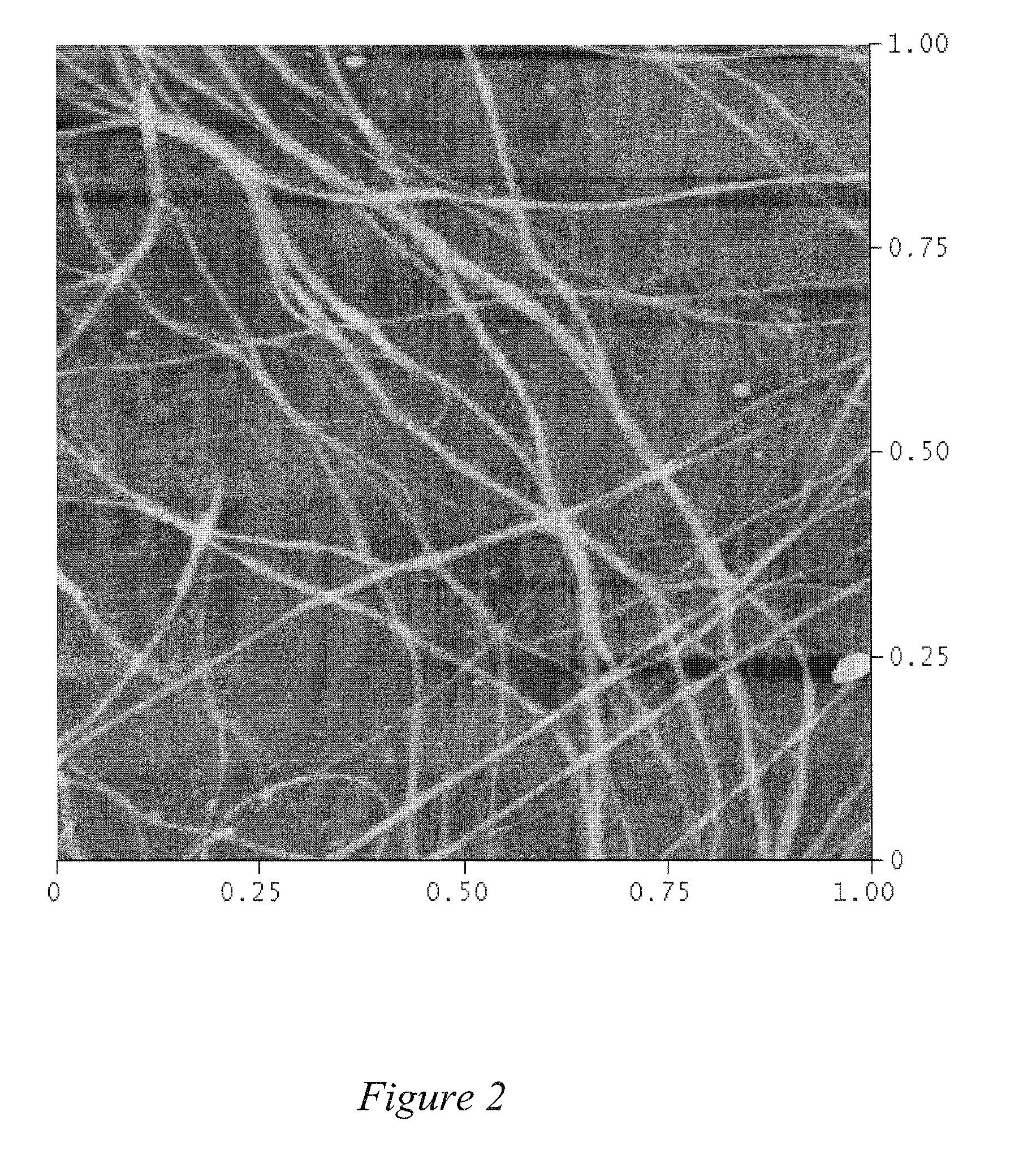Nanotube enabled, gate-voltage controlled light emitting diodes
a light-emitting diode and gate-voltage technology, applied in the field of nanotube enabled, gate-voltage controlled light-emitting diodes, can solve the problems of low luminance efficiency, substantial source-drain current, and high drive voltage of lateral-type transistors using a standard fet structure, and achieve the effect of increasing the life of the devi
- Summary
- Abstract
- Description
- Claims
- Application Information
AI Technical Summary
Benefits of technology
Problems solved by technology
Method used
Image
Examples
Embodiment Construction
[0019]Embodiments of the invention are directed to light emitting transistors that have a gating electric field to control electronic transport between a first electrode comprising a dilute nanotube network and an electroluminescent semiconducting layer. The nanotube network includes open spaces that allow for penetration of the gate field into an electroluminescent layer. The gate field controls the current injection into the electroluminescent layer and thereby the visible light output from the device. Suitable applications of this technology include lighting, displays and signs, for example.
[0020]A gating electric field is used to modulate the barrier to electronic transport between a dilute nanotube network and a semiconducting layer by controlling current injection into the semiconducting layer. If the semiconducting layer is an electroluminescent material, the device becomes a gate-voltage controlled light emitting diode (GLED), also termed a light emitting transistor. FIG. 1 ...
PUM
| Property | Measurement | Unit |
|---|---|---|
| gate voltage | aaaaa | aaaaa |
| gate voltage | aaaaa | aaaaa |
| gate voltages | aaaaa | aaaaa |
Abstract
Description
Claims
Application Information
 Login to View More
Login to View More - R&D
- Intellectual Property
- Life Sciences
- Materials
- Tech Scout
- Unparalleled Data Quality
- Higher Quality Content
- 60% Fewer Hallucinations
Browse by: Latest US Patents, China's latest patents, Technical Efficacy Thesaurus, Application Domain, Technology Topic, Popular Technical Reports.
© 2025 PatSnap. All rights reserved.Legal|Privacy policy|Modern Slavery Act Transparency Statement|Sitemap|About US| Contact US: help@patsnap.com



